Pegomya rubivora (Coquillett)
Sometimes I get reports of “raspberry cane borer” injury in early June. It doesn’t seem right, because raspberry cane borer emergence and activity in New Hampshire usually begins (in southeastern NH) around July 1st. This early injury is from the raspberry cane maggot.
The suspect injury begins from May 28th through mid-June. The new raspberry canes are usually 1 to 6 inches high at that time. The tips of some new canes suddenly wilt, and there’s no exterior girdle, as would be evident in raspberry cane borer attack. Close examination reveals a very tiny hole (perhaps 1mm wide) in the wilted tip, a trail of interior girdling leading from that hole, with a tiny maggot inside the cane. Later the wilting cane turns purplish in the vicinity of the internal tunneling. Usually by the first of July, the maggot has fully grown and pupated. Texts say that the maggot burrows deeper into the cane to pupate, but I have been unable to demonstrate that.
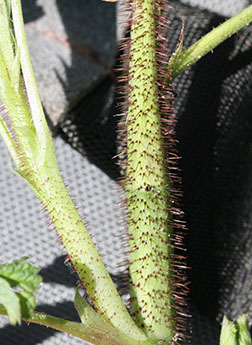
This is classic injury from raspberry cane maggot. Usually there is not enough injury to warrant spraying, and by the time most people notice it, it is too late. There is one generation per year, and the damage is usually worst towards field edges, especially bordering woodland. I see it mostly in red raspberry [Rubus idaues L], sometimes in black raspberry [Rubus occidentalis L] , but blackberries [Rubus allegeheniensis Porter] are attacked as well.

The tiny holes that careful observers can see is where the female fly stuck her ovipositor (egg-layer) into the tender cane, and inserted an egg. The maggot hatches from the egg, and tunnels through the tip. When fully grown, the maggots are 7 or 8mm long (roughly ¼ inch), and whitish, with a tiny, narrow head end and a broad, blunt rear end. The adult fly is 4-5mm (less than ¼ inch) long and looks a lot like a house fly… similar color and shape, but a bit smaller. It occurs in northern US states and much of Canada, as well as Europe (and Asia?). I have found plenty of examples of injury in Strafford, Rockingham, Hillsborough, Merrimack and Belknap counties. The species probably occurs state-wide.
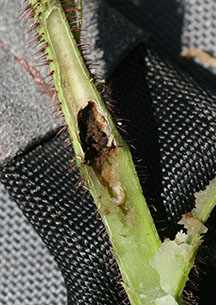
Although applying an insecticide can stop the egg laying, I recommend ignoring the problem. If there is heavy loss, you might reduce the risk of attack next year by pruning out and burning infested canes when this year’s injury shows up. Prune them well below the wilt point.
In a site with a pattern of significant injury each year, destroying nearby unmanaged brambles may reduce the pest population.
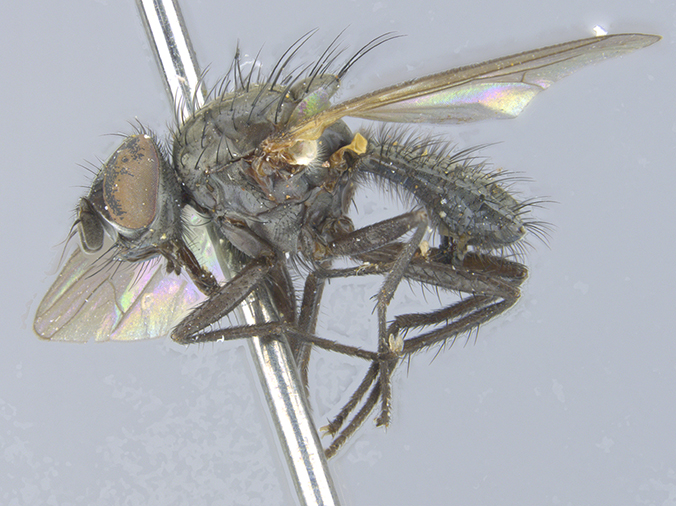
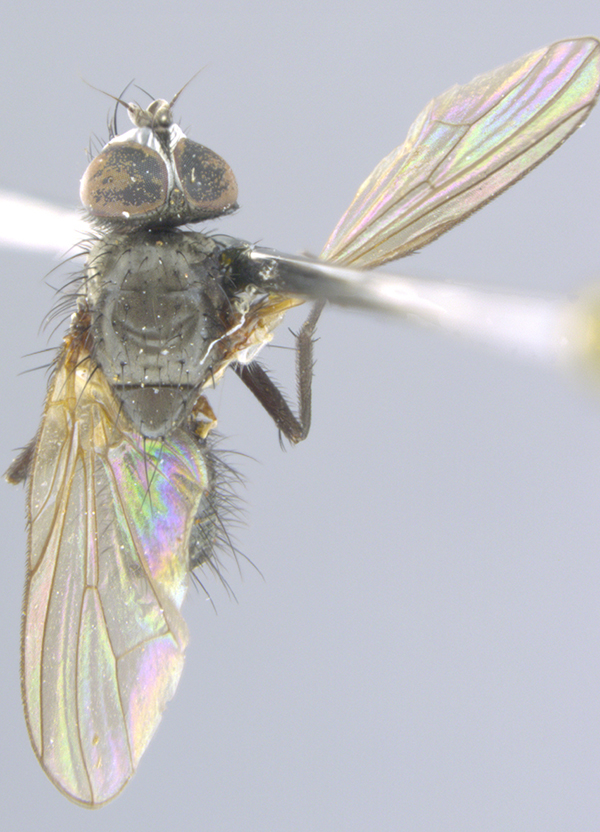
Insecticide spraying might help, but has several problems: 1) to be really effective, the grower would have to do frequent checks for evidence of the fly’s activity (damage showing up) in mid to late May. 2) Treatment would have to be applied immediately upon finding the first damage. 3) Insecticide labels do not list this species. That means that in New Hampshire, only growers with private pesticide applicator licenses would be allowed to try an insecticide, to see if it worked. The insecticide would have to be labeled for use on brambles, and be applied following the label (timimg, rate, etc). 4) most insecticides pose some risk to non-target organisms.
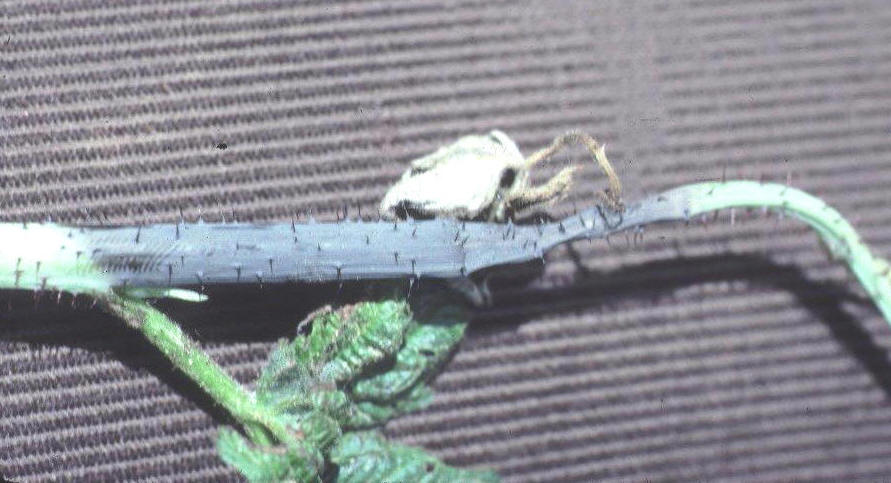
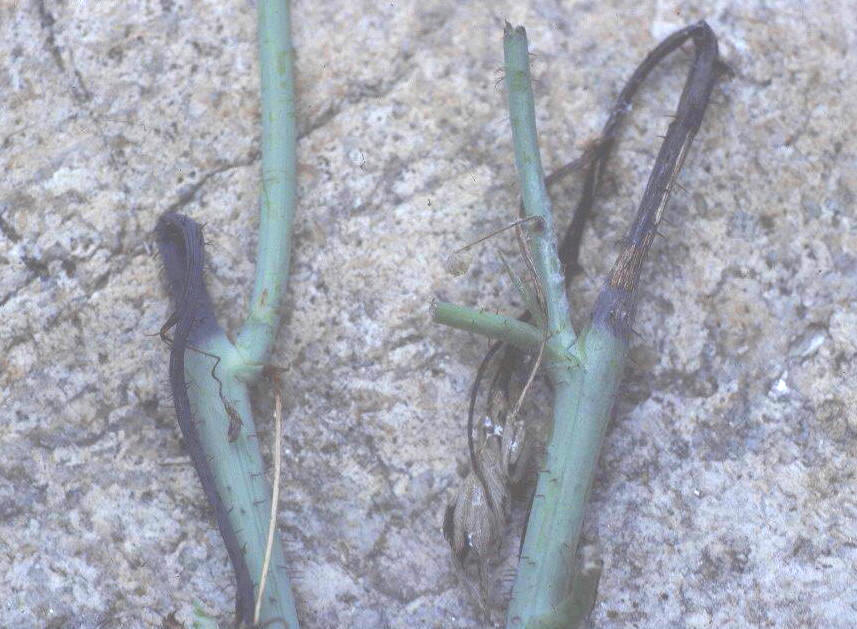
Acknowledgements
The injury photos were taken by Alan Eaton in 1988 and 2013. The photo of the pinned adult was provided by Jeffrey H. Skevington, at the Canadian National Collection of Insects, Arachnids and Nematodes, Ottawa, Canada. Thank you to Becky Sideman for reviewing the manuscript. Suzanne Hebert did the layout and posting to our website. Partial support for this work came from an Extension IPM Implementation grant from the National Institute for Food and Agriculture.
Download the Resource for the complete fact sheet and a printable version.
